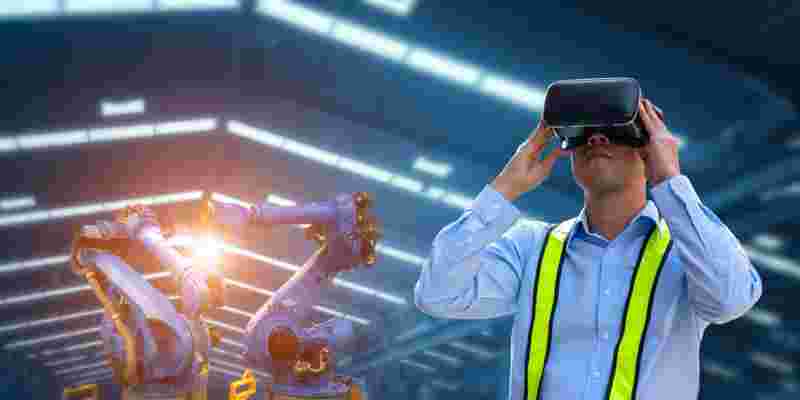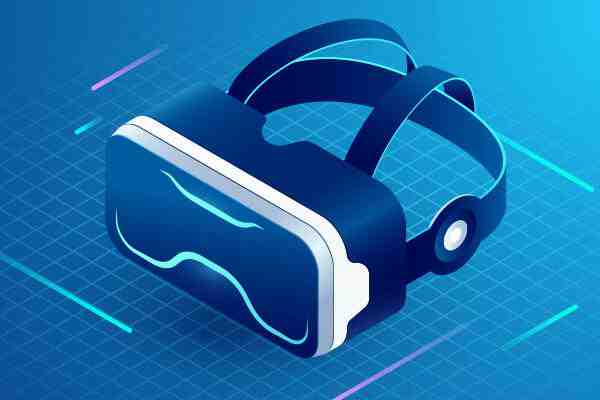Best Tools for Virtual Reality Software Development
How VR Technology Is Changing Manufacturing

Although virtual reality technology has been available for many years, it has only been recently utilized in manufacturing environments.
Virtual reality, when used in the manufacturing industry, can help with a wide range of issues such as increasing productivity, reducing training costs and increased availability of new products to market.
Employee safety is essential when it comes to working in manufacturing. Virtual reality allows management to get a glimpse of specific issues of concern, making changes, and providing a safer work environment, without the risk of employee injury in the process.
Virtual technology has been around for more than 50 years, but it’s only been recently that augmented reality (AR) and virtual reality (VR) have shown up in manufacturing environments. The technologies are well on their way to more widespread adoption. More than 1 in 3 U.S. manufacturers currently use or were expected to adopt VR and AR by 2018, according to a recent survey by PWC.
Early adopters in the manufacturing industry are thinking innovatively when it comes to AR and VR. As they consider the future, they’re coming up with ways to use these potentially disruptive technologies to improve worker safety, speed new products to market, reduce training costs and increase productivity, to name just a few uses. Many see virtual technology as important to staying competitive in the manufacturing marketplace.
Here are a few examples of how some companies are using AR and VR to change their manufacturing and allied processes – and how they’re already benefiting from these technologies.
Inventory management
Logistics company DHL successfully carried out a pilot project testing smart glasses and AR in a warehouse in the Netherlands. In cooperation with DHL customer Ricoh and wearable computing solutions expert Ubimax, it used the technology to implement “vision picking” in warehousing operations. Workers were guided through the warehouse by graphics displayed on the smart glass to speed up the picking process and reduce errors. The pilot proved that AR offers added value to logistics and resulted in a 25% efficiency increase during the picking process.
Vehicle design and build
Ford was one of the first automakers to go all-in on virtual technology, beginning in 1999. In 2014, Forbes reported that the company employed dedicated virtual reality specialists to lead the way for engineers to design and build entire vehicles, including autonomous vehicles, in a virtual environment. Today, Ford has a mandatory, multifunctional VR review for all vehicles that go into production.
Using virtual technologies delivers significant improvements in the areas of cost, time and quality. With VR, product designers and engineers have the ability to explore options that would have been cost- or time-prohibitive in the past.
Maintenance and assembly training
Numerous studies point to a reduction in workers available for manufacturing jobs and a growing skill gap. In the next decade, 2 million of the available 3.5 million manufacturing jobs in the U.S. will go unfilled because of a lack of skilled workers, according to a 2015 study by Deloitte.
AR and VR can speed the onboarding of new workers and improve worker productivity by offering more immersive on-the-job training. AR smart glasses that project video, graphics and text can visually guide a worker, step by step, through assembly or maintenance tasks. All that’s needed for the worker to complete a repair, for instance, is to gaze at the machine part to be repaired.
Software provider Upskill and GE Renewable Energy conducted a productivity study using AR to assist workers in wiring a wind turbine. A GE Renewable technician compared first-time use of smart glasses powered with Upskill’s Skylight software against the traditional process for wiring of a wind turbine. The technician saw an immediate 34.5% productivity improvement using AR.
Factory floor planning
Virtual technology is also being used for factory floor planning and manufacturing trade events. In mass-production manufacturing, factory planning – where to place tools, equipment and personnel – is crucial for productivity and efficiency.
Engineering a new plant or altering an existing one involves design, testing and trials, and any unexpected delays or a production line shutdown, even a temporary one, can be very costly. Virtual technologies can simplify and significantly shorten the process. Virtual plants can be designed to test production flows and how workers and robots perform tasks before changes are made in the physical world.
Even ergonomics can be tested and refined to assure everything runs smoothly and efficiently in the new plant or altered line or plant. Initial trials suggest that a virtually planned floor can be completed in a fraction of the time, bringing new products to the line fast. Here’s one example that illustrates this type of virtual testing.
Improved worker safety
Although the overall safety for those working in manufacturing has significantly improved over the years, just one injury or fatality is too many. One of the virtual reality is changing manufacturing is by providing additional safety.
The use of virtual reality allows plant managers to simulate assembly line configurations and the processes involved in production, which allows them to identify situations that may be potentially dangerous. Virtual reality may also be used as a way for employees to be immersed in a future workstation in order to capture the employee’s task proficiency, movement, and feasibility; ultimately eliminating the risk of potential injuries and/or fatalities.
Better-developed products
The use of virtual reality allows for the possibility of almost perfect assembly. The use of goggles that contain depth sensors, cameras, and motion sensors provide a “real” view of a working environment, engineers, and workers and how the instructions and parts are being assembled.
There are several companies that are utilizing virtual reality to ensure particular components are being properly assembled, including:
Lockheed Martin: The defense and aerospace company is using virtual reality to build the F-35. This technology enables engineers to not only work faster but with an accuracy of about 96%.
The defense and aerospace company is using virtual reality to build the F-35. This technology enables engineers to not only work faster but with an accuracy of about 96%. Ford Motor Company: Ford has and continues to be on the cutting age when it comes to incorporating modern technology. The company is using virtual reality to fine-tune the design of its automobiles, such as using it to simulate weather and road conditions from a driver’s perspective in order to develop a safer product.
Is virtual technology here to stay?
It’s still too early to know if AR and VR investments reflect a coming revolution, forever changing manufacturing as we know it, or if early adopters have embarked on a time of experimentation. Either way, virtual technology in manufacturing can no longer be described as all hype.
Virtual Reality (VR) Technology: An Implementation Guide
Virtual reality is a technology that allows to move multiple activities into the virtual realm and thus reduce the costs, the time, and – in some cases – even the corporeal risks related to performing these activities in biological reality.
In 2020, the global VR market accounted for $6.1 billion, and it is projected to reach $20.9 billion by 2025. The market’s key driving force is the growing affordability of VR-enabled hardware.
61% of businesses believe that VR is beneficial. Out of them, 23% are already using VR in practice, 21% introduce VR right now, and 18% plan to introduce VR soon.
Best Tools for Virtual Reality Software Development
October 28, 2020

What You Need for Virtual Reality Software Development
Virtual reality (VR) software development has become a new way to create media and entertainment. And it’s used for more than game development. Industries — like automotive, virtual production, and more — are applying VR technology to simulate environments to train people and test products in real time. Learn what tools you need to accelerate VR development.
What Is VR Software?
VR software is used to build immersive, simulated 3D environments. Teams do this by pulling together all their digital elements using a suite of VR software development tools.
What Is the Difference Between VR and AR? MR and XR?
To start, what’s difference between VR, AR, MR, and XR?
Virtual reality (VR) transports the person into a new environment, often using VR goggles. The goal is shut out the physical space and make the user feel like they are immersed in a new digital world — real or imaginary.
Augmented reality (AR) adds digital elements into the real world. Remember the Pokémon Go phenomenon? People were able to travel around physically to collect virtual creatures. Mixed reality (MR) combines aspects of both AR and VR to have real-world and digital objects overlay and interact.
All three of these terms are classified under the umbrella term, extended reality (XR). This includes technologies that enhance all the senses.
How Virtual Reality Software Works
Virtual reality software creates a new world by:
Developing objects that exist in a virtual 3D space.
Adding in sensory feedback to give a sense of presence — for example, sound or haptic feedback.
Emerging the user in interactive elements.
VR software development tools work based on the level of immersion they provide. Most VR tools can be categorized in terms of software development kits (SDKs), build tools (like game engines), and content creation/management.
Get Free Virtual Reality Software
